
Journal of Exercise Rehabilitation
Scope & Guideline
Elevating Standards in Exercise Rehabilitation Research
Introduction
Aims and Scopes
- Exercise Interventions for Rehabilitation:
The journal extensively covers studies that explore various exercise interventions aimed at rehabilitation for specific conditions, such as post-surgical recovery, neurological disorders, and chronic pain management. - Impact of Exercise on Physiological and Psychological Well-being:
Research articles often investigate how exercise influences physiological parameters (e.g., blood pressure, muscle strength) and psychological aspects (e.g., mood, cognitive function) across different demographics. - Innovative Rehabilitation Techniques:
The journal highlights new methodologies and technologies in rehabilitation, including the use of virtual reality, metaverse environments, and robotic-assisted therapies. - Population-Specific Studies:
A significant focus is placed on tailored exercise interventions for specific populations such as older adults, children with disabilities, and athletes, addressing unique rehabilitation needs. - Holistic Approaches to Health and Fitness:
The journal promotes a holistic view of health by incorporating studies that link exercise to broader health concerns, including obesity, metabolic syndrome, and mental health.
Trending and Emerging
- Integration of Technology in Rehabilitation:
There is a significant increase in research exploring the use of technology, such as virtual reality and mobile health applications, in exercise rehabilitation, signaling a trend towards innovative, tech-driven interventions. - Focus on Mental Health and Exercise:
Recent publications indicate a growing interest in the relationship between exercise and mental health outcomes, particularly in populations experiencing stress, anxiety, and depression. - Personalized and Adaptive Exercise Programs:
An emerging trend is the development of personalized exercise programs tailored to individual needs and conditions, particularly for older adults and those with chronic illnesses. - Holistic Approaches to Health:
There is a rising emphasis on holistic health approaches that consider the interplay between physical activity, nutrition, and mental well-being, aiming for comprehensive health improvements. - Research on Specific Populations:
There is an increasing focus on exercise rehabilitation for specific populations, including individuals with disabilities, chronic diseases, and athletes, highlighting the need for tailored interventions.
Declining or Waning
- Traditional Rehabilitation Techniques:
There appears to be a waning focus on conventional rehabilitation techniques that do not incorporate modern technology or innovative practices, as newer methods gain traction. - Non-Exercise Interventions in Rehabilitation:
Research on non-exercise based interventions, such as purely pharmacological approaches or passive therapies, seems to be decreasing, indicating a shift towards active rehabilitation strategies. - Generalized Exercise Recommendations:
Studies providing generic recommendations for exercise without specific context or targeted interventions are becoming less common, as the field moves towards more personalized and evidence-based approaches.
Similar Journals

Sport TK-Revista Euroamericana de Ciencias del Deporte
Advancing the Frontiers of Sports Science and RehabilitationSport TK-Revista Euroamericana de Ciencias del Deporte is a prestigious open access journal published by the University of Murcia in Spain, focusing primarily on the interdisciplinary fields of sports science, occupational therapy, physical therapy, and rehabilitation. Since its inception, the journal has gained recognition for disseminating original research and scholarly articles that contribute significantly to the advancement of knowledge in these domains. With an ISSN of 2340-8812 and an E-ISSN also of 2340-8812, Sport TK has been committed to open access since 2012, enhancing its global reach and accessibility for researchers, professionals, and students alike. The journal's current rankings indicate its relevance, being classified in quartile Q3 in Complementary and Manual Therapy and Q4 in several other categories such as Education and Physical Therapy. By bridging academic inquiry with practical application, Sport TK plays a pivotal role in promoting evidence-based practices and fostering collaboration amongst professionals dedicated to health and wellness in the sports sector.
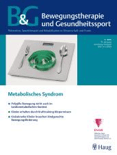
Bewegungstherapie und Gesundheitssport
Advancing Knowledge in Movement Therapy and Health SportsBewegungstherapie und Gesundheitssport, published by GEORG THIEME VERLAG KG, is a distinguished journal primarily focused on the fields of movement therapy, health sports, and rehabilitation sciences. With a commitment to fostering knowledge dissemination and innovation in promoting physical health and well-being, this journal serves as a vital resource for researchers, health professionals, and students interested in the intersection of exercise and therapy. While currently not offering an open access model, it maintains a robust impact on academic discourse, supported by rigorous peer-reviewed research that spans diverse methodologies and interdisciplinary approaches. The journal invites high-quality contributions that explore the efficacy of movement therapies, the impact of physical activity on health disorders, and emerging trends in health promotion strategies, thereby enhancing the understanding of physical well-being's role in society.

MHSalud-Revista en Ciencias del Movimiento Humano y la Salud
Bridging research and practice for a healthier future.MHSalud-Revista en Ciencias del Movimiento Humano y la Salud is a prominent open-access journal published by the UNIV NAC, ESCUELA CIENCIAS DEPORTE in Costa Rica since 2004, dedicated to advancing research in the fields of human movement sciences and health. With an ISSN of 1659-097X, this journal serves as a vital platform for the dissemination of innovative findings related to biomechanics, rehabilitation, sports medicine, and public health. Although it currently holds a Q4 classification across various relevant categories such as Biophysics and Orthopedics, the journal is committed to fostering scholarly communication and bridging the gap between research and practice in these critical areas. The accessible nature of its content allows both seasoned researchers and emerging scholars to engage with research findings, while its focus on diverse health topics ensures its relevance in a rapidly changing academic landscape. As the journal continues to evolve through 2024 and beyond, it remains a crucial resource for professionals, students, and academics aiming to contribute to the understanding and improvement of human health and movement.
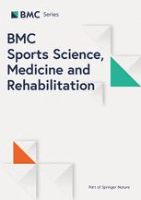
BMC Sports Science Medicine and Rehabilitation
Innovating rehabilitation strategies for enhanced performance.BMC Sports Science Medicine and Rehabilitation is a leading open-access journal published by BMC, based in the United Kingdom, dedicated to the dissemination of high-quality research in the fields of sports science, medicine, and rehabilitation. Established in 2013, the journal has quickly gained a prominent position, achieving Q2 rankings in major categories such as Orthopedics and Sports Medicine, Physical Therapy, Sports Therapy and Rehabilitation, and Rehabilitation as of 2023. With a Scopus ranking placing it in the 66th percentile for Rehabilitation and the 62nd percentile for Physical Therapy, BMC Sports Science Medicine and Rehabilitation serves as a vital resource for researchers, practitioners, and students alike. Its open-access format ensures that groundbreaking research is freely available, promoting knowledge exchange and fostering advancements in therapeutic practices and sports science innovations. Authors and readers are encouraged to engage with the journal's broad scope, spanning from evidence-based interventions to innovative rehabilitation strategies, all aimed at enhancing human performance and well-being.

Journal of Exercise Science & Fitness
Pioneering research for a healthier tomorrow.Journal of Exercise Science & Fitness is a premier Open Access journal published by Elsevier Singapore Pte Ltd, dedicated to advancing the field of exercise science through rigorous research and comprehensive reviews. Since its inception in 2005, the journal has made significant contributions to various domains including Pharmaceutical Science, Physical Therapy, and Sports Science, achieving a distinguished Q1 ranking in its respective categories as of 2023. With a commitment to disseminating knowledge without barriers, it has embraced an Open Access model since 2009, ensuring that cutting-edge findings are accessible to all researchers, practitioners, and students worldwide. Its high visibility is reflected in its Scopus rankings, placing it among the top-tier journals in the health professions and public health sectors. This journal serves as a critical platform for the latest developments in exercise science, promoting evidence-based practices that can enhance health and performance, making it an invaluable resource for those at the forefront of this dynamic field.
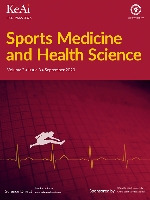
Sports Medicine and Health Science
Empowering Scholars in Sports Medicine and Health SciencesSports Medicine and Health Science, published by KEAI PUBLISHING LTD, stands as a pivotal resource for scholars and practitioners in the dynamic fields of sports medicine and health sciences. Established as an open access journal in 2019, it provides a platform for rigorous research that fosters innovation and improvement in physical therapy, rehabilitation, and orthopedics. With an impressive range of quartile rankings, it is recognized as a Q1 journal in Physical Therapy, Sports Therapy and Rehabilitation, and Q1 in Rehabilitation as of 2023, highlighting its esteemed contribution to the academic community. The journal is also notable for its high Scopus rankings, including a rank of #19 in Medicine Rehabilitation, situating it within the top percentile of research in these areas. Based in Beijing, China, the journal's scope encompasses a wide array of topics, ensuring comprehensive coverage of advancements and emerging trends. With its commitment to open access and high-quality content, Sports Medicine and Health Science is an essential publication for researchers, healthcare professionals, and students seeking to enhance their knowledge and contribute to the field.

BIOLOGY OF SPORT
Exploring the Intersection of Health and Athletic ExcellenceBIOLOGY OF SPORT is a leading peer-reviewed journal published by TERMEDIA PUBLISHING HOUSE LTD, renowned for its significant contributions to the fields of sports science, orthopedics, and rehabilitation. Since its establishment in 1984, this Open Access journal has facilitated the dissemination of important research findings and clinical practices that advance our understanding of athletic performance and physical health. With an impressive Q1 ranking in key categories such as Orthopedics and Sports Medicine, Physical Therapy, and Physiology, BIOLOGY OF SPORT is recognized for its rigorous standards and high-impact contributions, boasting a 95th percentile ranking in several Scopus categories. The journal is committed to fostering interdisciplinary knowledge that bridges fundamental biology with practical sports applications, making it an invaluable resource for researchers, healthcare professionals, and students dedicated to improving health and performance in sports contexts. For more information, you can explore their offerings and access articles at their Poland-based headquarters: KLEEBERGA 2, POZNAN 61-615.
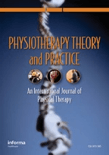
PHYSIOTHERAPY THEORY AND PRACTICE
Exploring Innovations in Physiotherapy and Sports TherapyPHYSIOTHERAPY THEORY AND PRACTICE is a leading journal within the realm of physical therapy, sports therapy, and rehabilitation, published by Taylor & Francis Inc. With an ISSN of 0959-3985 and an E-ISSN of 1532-5040, this esteemed journal focuses on the interdisciplinary approaches and clinical practices that advance the science and application of physiotherapy. Ranking in the top 33% of its category as indicated by its Q2 status in the 2023 category quartiles, it serves as an essential conduit for innovative research and evidence-based practices. The journal has been a vital resource since its inception in 1985, continuing to attract contributions that explore the latest developments in rehabilitation and therapy strategies. Although currently not an Open Access journal, PHYSIOTHERAPY THEORY AND PRACTICE remains pivotal in shaping the landscape of health professions, providing insightful articles that empower researchers, practitioners, and students to enhance patient care and treatment strategies in an evolving field.
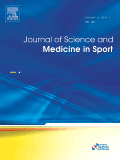
JOURNAL OF SCIENCE AND MEDICINE IN SPORT
Pioneering research at the intersection of science and sport.JOURNAL OF SCIENCE AND MEDICINE IN SPORT, published by Elsevier Science Ltd, is a premier academic journal based in the Netherlands that serves as a vital platform for disseminating cutting-edge research in the fields of sports medicine, orthopedics, and physical therapy. With an impressive Q1 categorization in Orthopedics and Sports Medicine, Physical Therapy, and Sports Science, this journal is recognized for its high-impact contributions and currently holds a significant rank in Scopus, positioned at #17 in Physical Therapy and #25 in Orthopedics. Spanning from 1998 to 2024, it provides scholars with rigorous peer-reviewed articles aimed at enhancing knowledge, practice, and research in sports and medicine. Although it does not offer open access, the journal remains essential for professionals, researchers, and students looking to stay ahead in these dynamic disciplines. By focusing on evidence-based practices and innovative methodologies, the JOURNAL OF SCIENCE AND MEDICINE IN SPORT continues to play a pivotal role in advancing the scientific understanding of health and performance in sports.
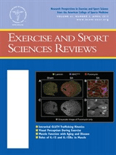
EXERCISE AND SPORT SCIENCES REVIEWS
Unveiling the latest breakthroughs in exercise physiology.Exercise and Sport Sciences Reviews is a premier journal published by Lippincott Williams & Wilkins, dedicated to advancing the field of kinesiology and sports science. With a history dating back to 1973 and an esteemed reputation, this journal maintains a robust impact factor and is recognized in the top quartile for its categories, including Orthopedics and Sports Medicine, Physical Therapy, Sports Therapy and Rehabilitation, and Sports Science. Researchers and professionals in the areas of exercise physiology, rehabilitation, and sports medicine rely on this authoritative source for cutting-edge reviews and meta-analyses that inform clinical practices and improve athletic performance. Although the journal is not Open Access, its substantial contributions to evidence-based practices solidify its importance in guiding future research and policy in the health sciences. The insights shared within its pages are essential for professionals looking to stay at the forefront of their fields, encouraging the advancement of science through comprehensive literature reviews and critical discussions of contemporary issues.